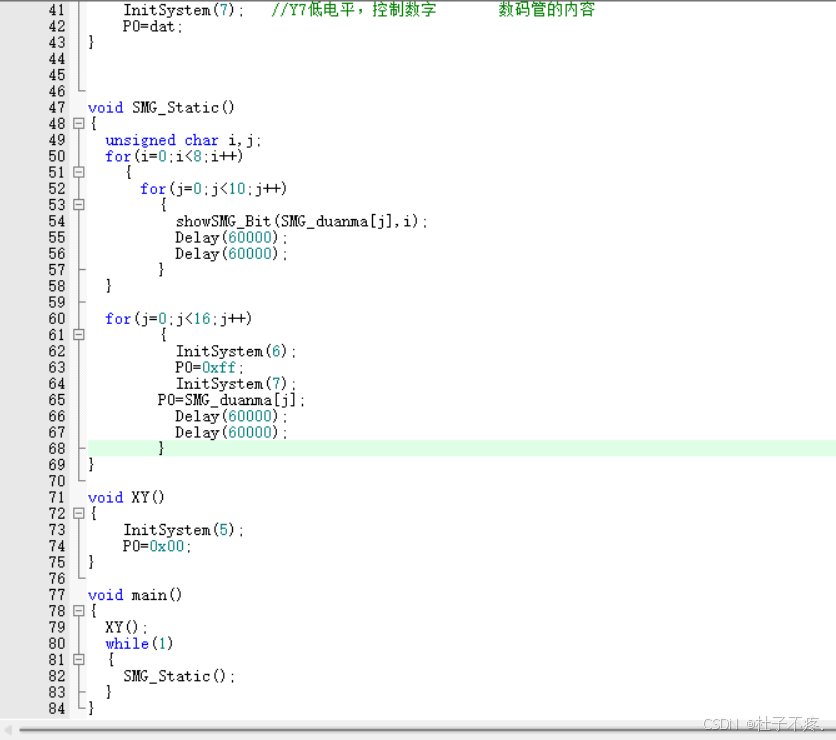引言
在现代互联网应用中,缓存是提升系统性能和用户体验的关键技术之一。通过将频繁访问的数据存储在快速访问的存储介质中,可以显著减少对数据库的直接访问压力,从而提高系统的响应速度和吞吐量。
本文将从实战的角度出发,详细介绍如何使用 Redis 和本地缓存(如 Caffeine)来优化应用性能。我们将分别探讨 RedisTemplate 操作缓存、@Cacheable 方法缓存以及 Caffeine 本地缓存的使用场景和实现细节。
一、RedisTemplate 操作缓存
1. Redis 简介
Redis 是一个开源的高性能键值存储系统,支持多种数据结构(如字符串、哈希、列表、集合、有序集合等),广泛应用于缓存、消息队列、实时分析等领域。
2. 在 Spring Boot 中配置 Redis
首先,在 pom.xml 中添加 Redis 依赖:
<dependencies>
<dependency>
<groupId>org.springframework.boot</groupId>
<artifactId>spring-boot-starter-data-redis</artifactId>
</dependency>
</dependencies>然后,在 application.properties 中配置 Redis 连接信息:
spring.redis.host=localhost
spring.redis.port=6379
spring.redis.password=
3. 使用 RedisTemplate 进行基本操作
RedisTemplate 是 Spring Data Redis 提供的核心模板类,用于简化 Redis 的操作。
示例代码
import org.springframework.beans.factory.annotation.Autowired;
import org.springframework.data.redis.core.RedisTemplate;
import org.springframework.stereotype.Service;
@Service
public class CacheService {
@Autowired
private RedisTemplate<String, Object> redisTemplate;
public void setValue(String key, Object value) {
redisTemplate.opsForValue().set(key, value);
}
public Object getValue(String key) {
return redisTemplate.opsForValue().get(key);
}
public void deleteKey(String key) {
redisTemplate.delete(key);
}
}
opsForValue():操作字符串类型的键值对。set(key, value):设置键值对。get(key):获取指定键的值。delete(key):删除指定键。
4. 设置过期时间
为了避免缓存数据无限期占用内存,我们可以为键设置过期时间。
public void setValueWithExpire(String key, Object value, long expireSeconds) {
redisTemplate.opsForValue().set(key, value, expireSeconds);
}
expireSeconds:过期时间(单位:秒)。
5. 批量操作
RedisTemplate 还支持批量操作,以提高效率。
public void batchSetValue(Map<String, Object> entries) {
redisTemplate.opsForValue().multiSet(entries);
}
public Map<String, Object> batchGetValue(Collection<String> keys) {
return redisTemplate.opsForValue().multiGet(keys);
}
二、@Cacheable 方法缓存
1. Spring Cache 简介
Spring Cache 是 Spring 提供的一套缓存抽象层,支持多种缓存实现(如 Redis、Caffeine、Ehcache 等)。@Cacheable 是 Spring Cache 中最常用的注解之一,用于标注需要缓存的方法。
2. 配置 Spring Cache
在 application.properties 中启用缓存:
spring.cache.type=redis
3. 使用 @Cacheable 注解
示例代码:
import org.springframework.cache.annotation.Cacheable;
import org.springframework.stereotype.Service;
@Service
public class UserService {
@Cacheable(value = "users", key = "#id")
public User getUserById(Long id) {
// 从数据库查询用户
return userRepository.findById(id).orElse(null);
}
}
value = "users":指定缓存的名称。key = "#id":指定缓存的键,使用方法参数id的值。
4. 自定义缓存配置
可以通过 @CacheConfig 注解为类级别配置默认的缓存名称和键生成策略。
import org.springframework.cache.annotation.CacheConfig;
import org.springframework.cache.annotation.Cacheable;
import org.springframework.stereotype.Service;
@Service
@CacheConfig(cacheNames = "users")
public class UserService {
@Cacheable(key = "#id")
public User getUserById(Long id) {
// 从数据库查询用户
return userRepository.findById(id).orElse(null);
}
}
三、Caffeine 本地缓存
1. Caffeine 简介
Caffeine 是一个高性能的 Java 缓存库,由 Google 开发并维护。它支持本地缓存,并提供了丰富的功能(如自动过期、容量限制、统计信息等)。
2. 在 Spring Boot 中集成 Caffeine
首先,在 pom.xml 中添加 Caffeine 依赖:
<dependencies>
<dependency>
<groupId>com.github.benmanes</groupId>
<artifactId>jcache</artifactId>
<version>1.0.0</version>
</dependency>
</dependencies>然后,在配置类中配置 Caffeine 缓存管理器:
import org.springframework.context.annotation.Bean;
import org.springframework.context.annotation.Configuration;
import org.springframework.cache.CacheManager;
import org.springframework.cache.caffeine.CaffeineCacheManager;
import com.github.benmanes.caffeine.jcache.JCache;
@Configuration
public class CacheConfig {
@Bean
public CacheManager cacheManager() {
CaffeineCacheManager caffeineCacheManager = new CaffeineCacheManager("users");
caffeineCacheManager.setCaffeine(JCache.Caffeine.newBuilder()
.maximumSize(1000)
.expireAfterWrite(10, TimeUnit.MINUTES)
.build());
return caffeineCacheManager;
}
}
3. 使用 @Cacheable 结合 Caffeine
与 Redis 类似,我们可以使用 @Cacheable 注解结合 Caffeine 实现本地缓存。
import org.springframework.cache.annotation.Cacheable;
import org.springframework.stereotype.Service;
@Service
public class UserService {
@Cacheable(value = "users", key = "#id")
public User getUserById(Long id) {
// 从数据库查询用户
return userRepository.findById(id).orElse(null);
}
}四、总结与选择建议
1. 总结
- Redis:适合分布式缓存场景,支持高并发和大数据量。
- @Cacheable:简化缓存逻辑的实现,支持多种缓存后端。
- Caffeine:适合本地缓存场景,性能优异且配置简单。
2. 选择建议
- 如果需要分布式缓存且数据量较大,推荐使用 Redis。
- 如果需要本地缓存且追求高性能,推荐使用 Caffeine。
- 如果希望统一管理缓存逻辑,可以结合
@Cacheable和具体的缓存实现(如 Redis 或 Caffeine)。











![[每周一更]-(第133期):Go中MapReduce架构思想的使用场景](https://i-blog.csdnimg.cn/direct/1b53c14975eb424886ff82c6cce3f558.jpeg#pic_center)







